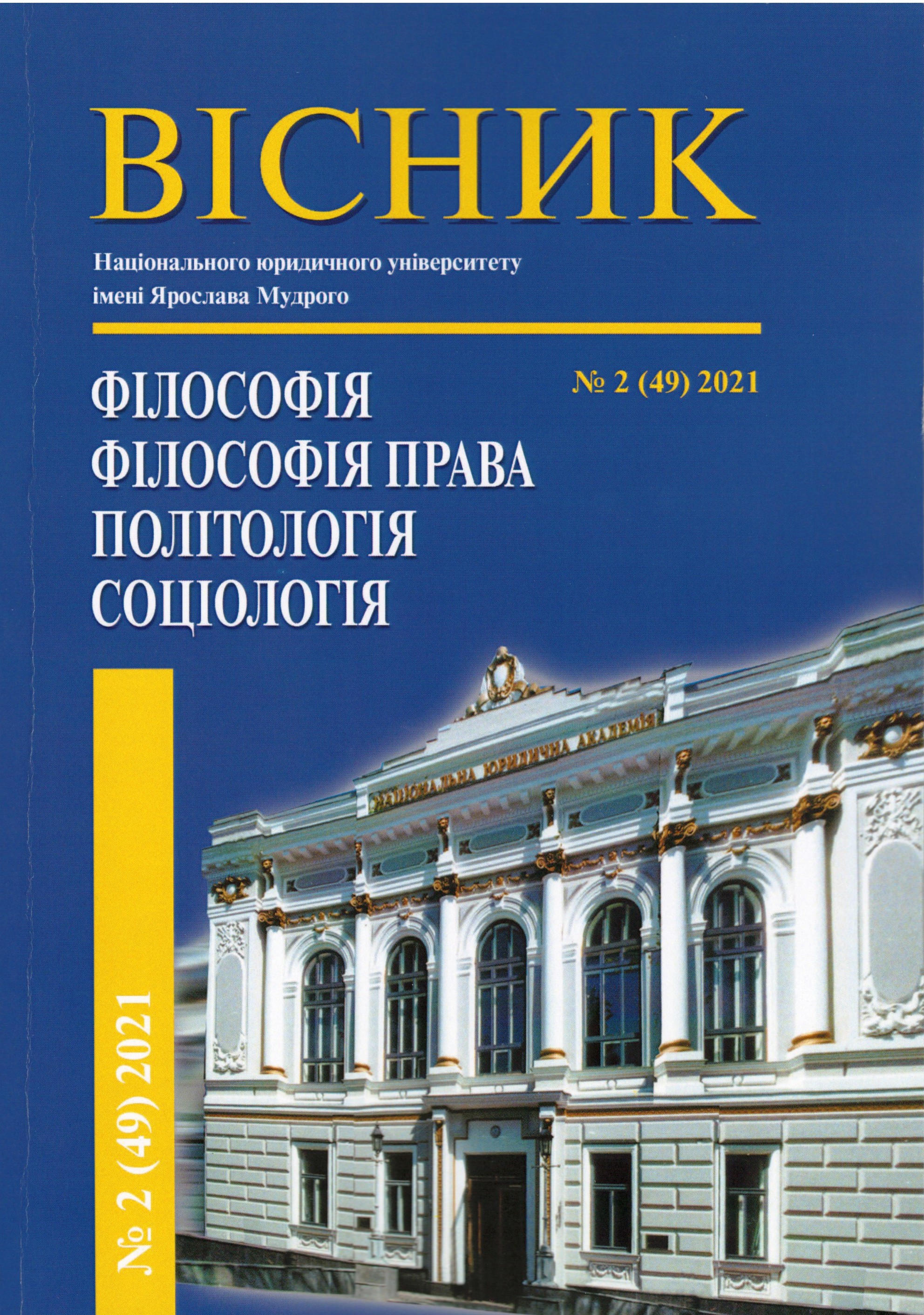СЕМИОТИКА ЖЕСТА: ПЕРФОРМАТИВНЫЙ КОНЦЕПТУАЛИЗМ
SEMIOTICS OF GESTURE: PERFORMATIVE CONCEPTUALISM
Author(s): Yuliia Vasylivna Meliakova, Inna Igorivna KovalenkoSubject(s): Theatre, Dance, Performing Arts, Visual Arts, Aesthetics
Published by: Національний юридичний університет імені Ярослава Мудрого
Keywords: performativity; performance; agent; art of action; body; actionism; installation;
Summary/Abstract: Problem setting. This article poses the problem of understanding and applying performance as a conceptual model of the functioning of an individual in a modern multilayered reality. The study presents an analysis of popular actionist practices and the further development of the pure action ontology. The performance serves as an approbation of the dynamism technique and the principle of action in social, digital and artistic actions.Recent research and publications analysis. The assertion of the principle of dynamism and activity in the modern cultural space explains the popularity of performative topics in a parallel scientific and philosophical discourse. At the same time, the bulk of works on performance relates to the field of theory and methodology of art. These are the works of such authors: G. Elshevskaya, E. Krylova, E. Andreeva, J. Kostincova, D. Filippova, Andreyand Yaroslava Artemenko, H. Petrovsky, S. Levitt, H. Downey and J. Sherry, A. Eckersleyand C. Duff.G. Reingold, M. Cuellar-Moreno and J. Antonio Cubas-Delgado, A. Loskutov,O. Novoselova and E. Kurbanova and others have studied dynamic models of bodily expressiveness in social practices, including in the information space of culture and communication. In turn, the American philosophers J. Butler, J Dean and G. Standing develop the concept of performance in relation to political actionism. They view the gatherings of social rights agents as a performative practice of their relationship to power.Paper objective. The aim of the study is to review and theoretically analyze modern creative practices of the subject’s bodily expression in the field of art, politics, law and digital communication, as well as to further substantiate the methodological role of the performative concept in modern culture.Paper main body. Today’s popular installations, happenings, flash mobs and challenge explicates the very essence of modern human existence in the world. Art zones and other creative social spaces (workshops) use direct body language in their functioning and, at the same time, are highly attractive and effective in today’s youth environment. Silent actions demonstrate the limited possibilities for a person to manifest themselves, despite the large number of rights, freedoms and technical means to improve life. Defective selfpresentation expresses the one-sided and limited nature of the subject’s existence in the social, legal, political and cultural space today.The natural change of technological structures, cultural eras and political models in the world irreversibly modifies a person, his environment and the possibilities of self-realization in it. The creative space of action allows to express the conceptual ontological principle of modernity – the break between the physical and the semantic, the act and the commentary,the action and the word, the body and corporeality. In a stratified reality, a person cannot maintain integrity. His verbal-symbolic being is separated from the physical (body); they express themselves and communicate autonomously and independently. Desocialization and the dominance of virtuality led to the dismemberment and impoverishment of many human functions, in particular the localization of his speech and actions. Therefore, performance is becoming an irreplaceable alternative way of self-realization of the silent body. While language remains a way of being a person as an agent of the information environment.Conclusions of the research. Thus, the study refers to the art experience of bodily subjects as a manifestation of their anthropological authenticity, social significance, legal usefulness, epistemological activity and political will.
Journal: Вісник НЮУ імені Ярослава Мудрого. Серія: Філософія, філософія права, політологія, соціологія
- Issue Year: 49/2021
- Issue No: 2
- Page Range: 40-65
- Page Count: 26
- Language: Russian

